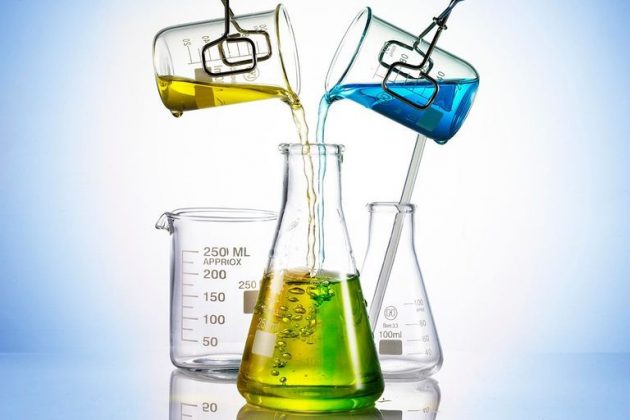The month of April is important in the history of Chemical Weapons. This month, our columnist examines the close links between chemical weapons and pesticides. Some of the precursors of chemical warfare agents have benevolent commercial applications and are required for synthesis of useful products in plastics and pharmaceuticals. The threat of chemical weapons will persist as long as chemical pesticides continue to be manufactured.
On April 29 each year, since 2005, an Annual Day of Remembrance is observed in memory of all victims of chemical warfare. It was on this day in 1997 that the Chemical Weapons Convention (CWC) entered into force. April is significant for yet another reason in the history of chemical weapons. It was on April 22, 1915, that German army unleashed chemical warfare. In the first recorded use of chemical weapons, 6000 canisters containing 168 tonnes of chlorine were released into the trenches occupied by French and Algerian soldiers near the Belgian city of Ypres. 5000 soldiers died within minutes. This was in total disregard of The Hague conventions of 1899 and 1907, which prohibited the use of poisonous gas in warfare. What an irony for a chemical that has saved more lives in the last 100 years than any other in human history!
Proliferation
One million casualties and 90,000 deaths were reported in WW-I due to use of chemical weapons from both sides. Phosgene and mustard gas were used with impunity. After the war, western countries signed the 1925 Geneva Protocol, that banned the use of chemical and biological weapons. But that did not deter them from inventing new increasingly toxic chemicals. Germany developed nerve agents like Sarin, Tabun and Soman. Britain responded with VX. USA never signed Geneva Protocol. Between 1961 and 1969 US military spent $2 billion in stockpiling chemical weapons. Hundreds of thousands of tonnes of obsolete chemical weapons were directly dumped into the sea during this period. But for the Dugway accident of March 1968, the clandestine testing of chemical weapons by the US military would not have been brought to light. An accidental release of the nerve gas VX at higher than intended height led to the death of 6000 sheep and triggered a nationwide debate on chemical weapons.
The recent incidents in Syria have brought chemical weapons to the forefront again. And the chemicals used are getting more potent. Novichok, the nerve agent allegedly used on a Russian spy in England recently, is reported to be 8 times more powerful than VX.
Dual Use
Some of the weapon grade chemicals and their precursors have perfectly legitimate and benevolent applications in many areas. These include not just insecticides and herbicides but also plastics, pharmaceuticals and cosmetics. Phosgene, one of the deadliest chemical weapons of yesteryear, is a classic example. It is a valuable building block for synthesis of many useful products. Millions of tonnes of phosgene are used for the manufacture of toluene di isocynate (TDI), an intermediate of polyurethanes. Phosgene is also used in large quantities in the manufacture of polycarbonates. It is this dual use that makes the chemical industry jittery. The battle against chemical weapons has to be fought with a double-edged sword.
To address this knotty issue, CWC has adopted a very broad-based definition of chemical weapons. The term chemical weapon is applied to any toxic chemical or its precursor that can cause death, injury, temporary incapacitation or sensory irritation through its chemical action. Munitions or other delivery devices designed to deliver chemical weapons, whether filled or unfilled, are also considered weapons themselves. CWC classifies the chemicals and their precursors that could be used as chemical weapons into three schedules. Schedule-1 chemicals have the highest risk and are rarely used for peaceful purposes. Schedule-2 chemicals are mostly precursors to the manufacture of Schedule-1 chemicals and are not produced in large quantities for commercial applications. Schedule-3 chemicals are produced in large quantities for purposes not prohibited by the convention. Phosgene falls under Schedule-3, which also includes apparently innocuous precursors like thionyl chloride and triethanolamine.
Many of the weapon grade chemicals and their precursors are used in the pesticide industry. Sarin, a chemical weapon now, was once used as an insecticide. Pesticides and insecticides are a big bugbear for the chemical industry in its fight to regulate and monitor chemical weapons. Nerve agents were accidentally invented while seeking a more effective pesticide. They have similar molecular structure and the way a nerve agent acts on a human being is exactly the way a pesticide kills an insect.
Drones
Delivery and detection of chemical weapons have both gone hi-tech. Terrorists have reportedly used drones for dispersal of chemical warfare agents. Drones are also now being deployed to detect chemical weapons. Drones fitted with ion-mobility spectrophotometer can detect 20 different chemical warfare agents in parts per billion concentrations. The drones are also equipped with sample collectors to store substances for future forensic analysis. Thus, even drones have a “dual use”.
Disposal
CWC requires the signatory countries to declare their existing stockpiles of chemical weapons and destroy them under strict international monitoring. Further it requires them to dismantle the chemical weapons production facilities or convert those facilities to peaceful purposes. USA and Russia, the two largest owners of chemical arsenals have missed multiple deadlines in fulfilling their obligations under CWC. While Russia finally eliminated its stockpile in September last year, USA targets to do so only by 2023.
Safe disposal of unused chemical weapons is a looming problem. Chemical weapons are destroyed by incineration. US army has built a highly automated incineration plant at the cost of USD 4.5 billion for destroying its huge stockpile of obsolete chemical weapons. But the plant has reportedly run into snags with robots unable to open the shells containing the mustard gas due to higher than expected corrosion. Manual intervention by workers donning protective equipment would be necessary. US army is now considering an alternative method of disposal by detonating the shells in closed chambers at temperatures of 540 degrees C. But the local community is apprehensive of contaminants being released into the air.
Research is on for developing new methods of detecting and disposing toxic chemicals. UK based research team has found that mustard plants soak up toxic chemicals from the soil just the same way they would absorb nutrients. This not only provides for improved detection of trace contaminants present in the soil, but also their safe disposal. Having drawn the chemical agents out of the soil, the plants could be incinerated under safe conditions.
Epilogue
The juxtaposition of “chemical” and “weapon” is uncomfortable for the chemical industry, which is already facing the brunt of poor public image. While non-phosgene route has been successfully commercialised for polycarbonate manufacture, it has not met with similar success in case of TDI. It is estimated that without chemical pesticides, the world could lose one-third of its farm output each year. And that is something we just cannot afford. As long as chemical pesticides are manufactured, the threat of chemical weapons will remain.
Readers’ responses may be sent to k.sahasranaman@gmail.com or chemindigest@gmail.com

































